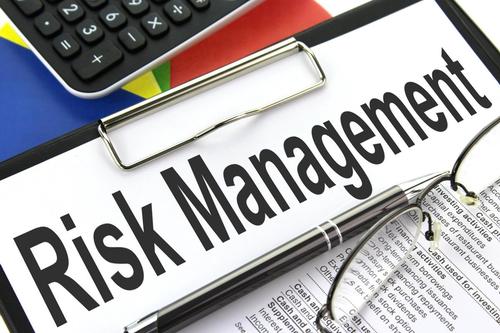Individual Assignment
EF4321 Derivatives and Risk Management
Notes:
- This is NOT a group assignment. Every student should work INDIVDUALLY and submit INDIVDU-
- This problem set is to be turned in by Tuesday, 10 December 11:00 pm. Please present your work using MS Word or PDF and submit online on You may use Excel for calculation but the final solution should be presented in MS Word orPDF.
- This assignment score will constitute 50% of the semester
- Allof questions are from lectures 6 though

True/False Questions [30 points – 3 points for each]
For each of the following statements, mark (a) if the statement is true or (b) if it is false.
- The profit for a short position in a call option is always negative or
- True
- False
- As the time to expiration becomes longer, an American call option always becomes more
- True
- False
- Consider two European put options with the same expiration dates and the same strike prices. The underlyingassets of the two options are One option is for stock A whose current price is $50 and has the volatility of 30%. The other is for stock B whose current price is $45 and has the volatility of 25%. Both stock A and B will pay no dividends. The price of put A is always higher than the price of put B.
- True
- False
- The put-call parity holds only when future stock price changes as described in a binomial
- True
- False
- To find the option price in a binomial tree, we need an assumption regarding the probability of the increase/decrease in the stock
- True
- False
- Suppose that risk-averse investors expect the return on a stock to be µ per annum and the risk-free rate is r per annum. In a binomial tree, if µ < r, the real probability of an increase in the stock price is lower than the risk-neutral probability of the
- True
- False
- Consider an American put option on a non-dividend paying stock. The option will expire on date T . On date t(< T ), the option payoff from the immediate exercise is always lower than the value that results from not exercising and holding the
- True
- False
- In risk-neutral valuation, we recognize that investors are risk-averse and thus modify the probability of an increase in a stock price from the real
- True
- False
- In the Discounted Cash Flow, the required return on a European option should be higher than the risk-free rate. Otherwise, an arbitrage
- True
- False
- An investor wants to construct a bull spread using put options with the same expiration dates. The investorneeds to long the put with strike price K1 and short the put with strike price K2(> K1).
- True
- False
2. Short-Answer Questions
- Consider a three-year European call option with the strike price of $150. The underlying stock will pay $10-dividend two years later from now. The current stock price is $170. The risk-free rate is 3% per Find the range of the call prices that do not allow any arbitrage. [5 points]
- An investor wants to construct a bear spread using two put options with the same expiration T . One put has the strike price of $20 and currently sells for $2. The other put has the strike price of $30 and currently sells for $7. Find the range of stock price on T that results in a positive profit for the investor. [5points]
- In time 0, an investor takes a calendar spread by selling two-year European call option and buying three-year European call option. These two options have the same strike price of $80 and are for the same stock that pays no dividends. The two-year option sells for $5 and the three-year option sellsfor
$7. Two years later, the stock price turns out to be $90. The risk-free rate is 2% per annum. What is the minimum of the profit from this strategy? (We assume that we sell the longer-term option in year two) [5 points]
- Consider a European call and a European put on a non-dividend-paying stock. Both the call and the putwill expire in one year and have the same strike prices of $120. The stock currently sells for $115. The risk-free rate is 5% per The price of the call is $7 and the price of the put is $5. Is there an arbitrage? If so, show an arbitrage strategy. (To show the arbitrage, present the table listing actions and resulting cash flows) [6 points]
- Consider a two-year European put on Canadian Dollar (CAD). The strike price of the put is 6.50 HKD(HongKong Dollar)/CAD. The risk-free rate is 2% per annum in Hong Kong and 3% per annum in Canada. The current exchange rate is 5.90 HKD/CAD. The put currently sells for $0.4 in Hong Kong. Is there an arbitrage for Hong Kong investors? If so, show an arbitrage strategy. (To show the arbitrage, present the table listing actions and resulting cash flows) [6 points]
- Supposethat there are two possible states of the economy, A and B, in year T . A stock’s price in year T will depend on the economic state as in the table below. A risk-free bond currently sells for $8 and it will pay $10 in year T in every
| state A | state B | |
| stock | $150 | $80 |
| bond | $10 | $10 |
- An one-year European call option has the strike price of $60. The underlying stock pays no dividend and currently sells for $70. One time step is six months long, and the stock price may move up or down by 10% in each step. The risk-free rate is 3% per
- What is the risk-neutral probability of an increase in the stock price in each step? [5points]
- What is the time-0 current price of the call? [6points]
- Find the replicating portfolio that we construct in time 0 to generate the same value as the call six months later. [6points]
- Suppose that risk-averse investors require the stock return to be 12% per annum. In the approach of Discounted Cash Flow, what is the discount rate for the call per annum? [7points]
(Hint: Use the replicating portfolio found in (c).)
- The current term-structure of risk-free rate is as
Term-structure in year 0 maturity (years) zero-rate (%)
1 2.5
2 3.0
A risk-free bond will pay $1,000 two years from now. The price of the bond one year later depends on the term structure then. There are two possible scenarios in year 1:
Term-structure in year 1
Scenario A Scenario B
| maturity (years) | zero-rate (%) | maturity (years) | zero-rate (%) | |
| 1 | 1.0 | 1 | 4.0 | |
| 2 | 2.0 | 2 | 5.0 |
An investor considers buying an one-year European call option on the bond with the strike price of
$970.
- Whatare the payoffs in scenario A and B in year one for a long position in the call? [6 points]
- What is the present value (in year 0) of the call?[7 points]
(Hint: Find a replicating portfolio using the two-year bond and an one-year bond. For an one-year bond, you can choose any face value as you like.)
